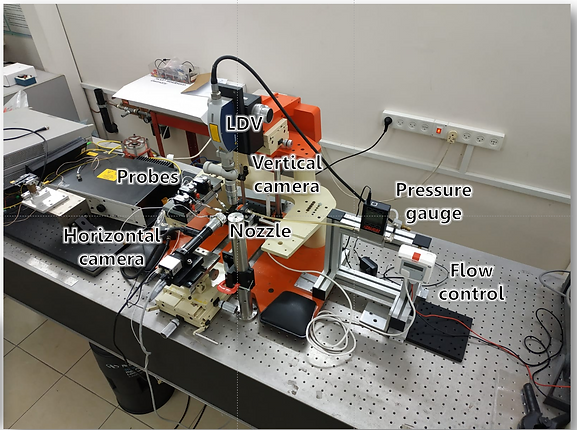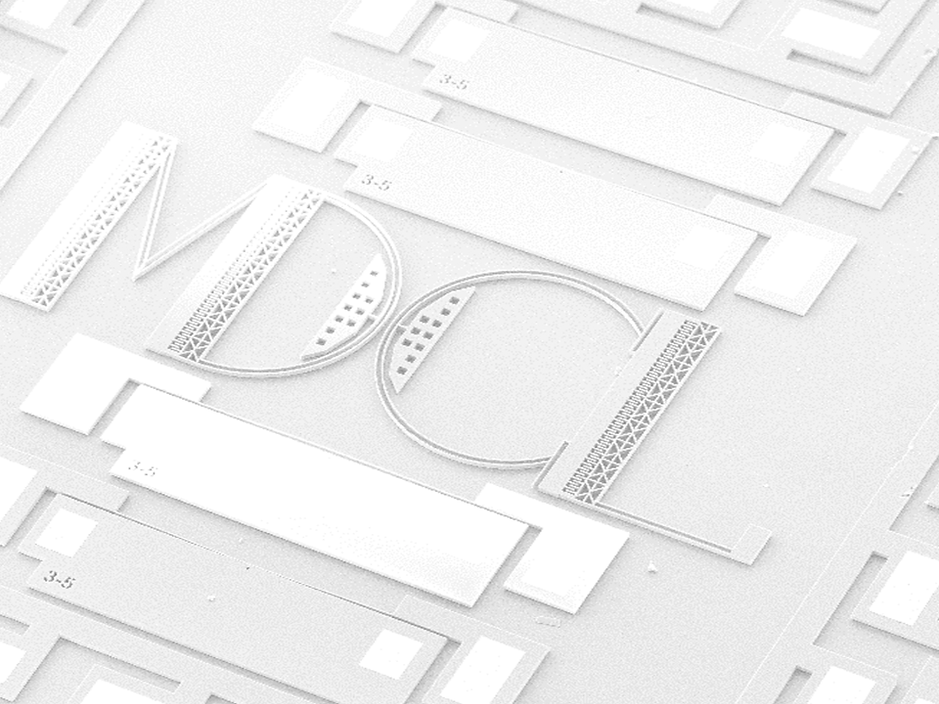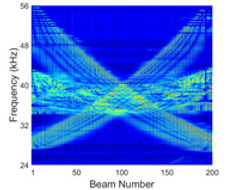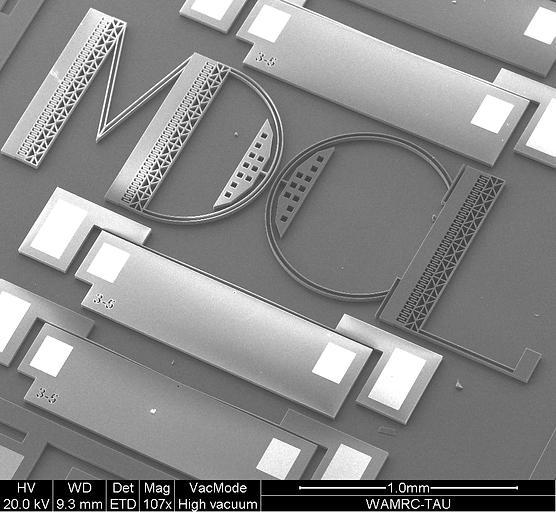

Reserach
Research projects requiring the use of the tool



Fig. 2. (a) Array of micro-cantilevers actuated by fringing electrostatic fields [5]. (b) Measured modal patterns of the array, illustrating a combinatorial parametric resonance [6]. The actual vibrational amplitudes were not measured; they are still to be quantified using MSA-600. (c) Vibrational shape of a recently fabricated 400 nm thick 700 mm in diameter microplate. The measurements were performed using the MSA tool available in the laboratory of Dr. Asaf Ya’akobovitz, Ben-Gurion University
The research conducted in our Microsystems Design and Characterization Laboratory (MDCL) is focused on the development of new approaches in sensing and relies on the investigation of complex nonlinear dynamic responses of micro devices. In this context, the availability of a state-of-the-art optical tool for highly accurate measurements of dynamic responses is of primary importance. Currently, we are using the most basic, single point LDV, which was purchased in 2005 (with the funding of the Israeli Ministry of Defense). This tool is the key metrological instrument and the main “working horse” that the entire research conducted in the laboratory is relying on. However, the abilities of this tool are very limited. It allows only out-of-plane velocity measurement at a single point, does not provide scanning and visualization abilities and data processing, without mentioning in-plane motion characterization or optical profiling. Recently, a part of the data acquisition electronics ceased to function. These outdated cards are not available anymore and cannot be repaired. This severely limits the research abilities of the laboratory.
There are several projects where the use of MSA-600 can revolutionize the research outcome, therefore promoting publications in high-quality journals and attracting research funds. Among these projects are investigation of nonlinear electrostatically actuated bistable micro structures [3][4] (supported by ISF); dynamics in large arrays of micro and nano resonators [5][6] (in collaboration with Cornell University and NIST, USA), micromechanical flow sensors [7][8] (with Prof. Liberzon, supported by the Ministry of Science) and inertial sensors [9] (in collaboration with RAFAEL and IAI, also supported by MAFAT). It is anticipated that the research in these directions will be continued and expanded. In parallel with the research in MEMS/NEMS, new scientific directions, involving dynamic characterization, recently emerged. One can mention development of mechanically deformable optical meta materials (with Prof. Scheuer, School of Electrical Engineering), dynamics of flowers petals, which revealed that the flower may serve as an auditory sensory organ [10] (with Prof. Yovel, School of Zoology, and Prof. Hadany, School of Plant Sciences and Food Security) or investigation of the dynamics of insects wings (with Prof. Ribak, School of Zoology). The incorporation of the MSA tool will allow to fully realize huge scientific potential of these exciting projects.
Many physical phenomena are intrinsically of a coupled nature and involve, among others, mechanical responses. Although these couplings are mostly negligible at the macro scale, they are strongly pronounced at the micro and especially nano scales. Mechanical responses caused by electrostatic, capillary, Van der Waals forces and even light pressure can be registered when the object is downscaled and therefore can be used for indirect measurement of various, non-mechanical, physical quantities. An ability to measure mechanical responses with high accuracy is one of the key capabilities, which should be available in any advanced micro/nano characterization lab.
The coupling between different physical stimuli and mechanical responses, which are, in turn, transduced into electrical signals, lies at the foundations of micro- and nanoelectromechanical systems (MEMS/NEMS). Pressure sensors monitoring deflections of a membrane, inertial sensors extracting acceleration from the displacement of a proof mass or resonant gas sensors are all based on this principle. In these devices, the mechanical responses to be measured are often very small, down to nanometers or even less. For this reason, optical detection allowing the most precise and non-contact measurements is widely adopted. While large variety of optical characterization approaches were developed [2][2] and other optical characterization tools are available on the market, laser Doppler vibrometry remains the most widely used for dynamic characterization of micro and nano devices. The tools of the Polytec MSA- family definitely became a golden standard within the micro- and nano systems community and the “must have” instrument in any advanced laboratory exploring MEMS/NEMS dynamics
Our Research Focus

The research which is carried in the laboratory is concentrated on the development of various types of micro actuators, modeling problems and on the MEMS dynamics in particular. A distinctive feature of problems arising in MEMS applications is the coupling between different fields and complexity of problems. For example the dynamics of a typical MEMS device considered as a mechanical system is influenced not only by the surrounding electric field or by fluid-structure interaction forces but also by the driving electric circuit. In this case many important effects affecting the dynamics of the device cannot be correctly predicted and described without experimental investigation. The ability to perform the experimental investigation in this case is crucial for the research quality.
The intensive development of micro electro mechanical systems (MEMS) has its influence on different areas of physics and engineering including applied mechanics, which faces new challenging problems. The research in the area of MEMS usually falls in three principal directions: design and modeling, fabrication and testing/characterization. The research which is planned to be carried out in the laboratory is concentrated mainly on the modeling problems in general and on the MEMS dynamics in particular.
Multidisciplinary character of MEMS technology requires from various branches of mechanics to be involved in the modeling process. Today’s common practice is the combined analysis of the phenomena of structural and solid mechanics, electromagnetism, heat transfer and fluid mechanics while the influence of the MEMS fabrication process on the system parameters is kept in mind. As a result of the complexity of the problem the adequate model of the device cannot be built without profound theoretical investigation of different physical phenomena taking place in the Microsystems. On the other hand it is difficult to overestimate the importance of the experimental study of these phenomena. A distinctive feature of problems arising in MEMS applications is the coupling between different fields. For example the dynamics of a typical MEMS device considered as a mechanical system is influenced not only by the surrounding electric field or by fluid-structure interaction forces but also by the driving electric circuit. In this case many important effects affecting the dynamics of the device cannot be correctly predicted and described without experimental investigation. The ability to perform the experimental investigation in this case is crucial for the research quality


